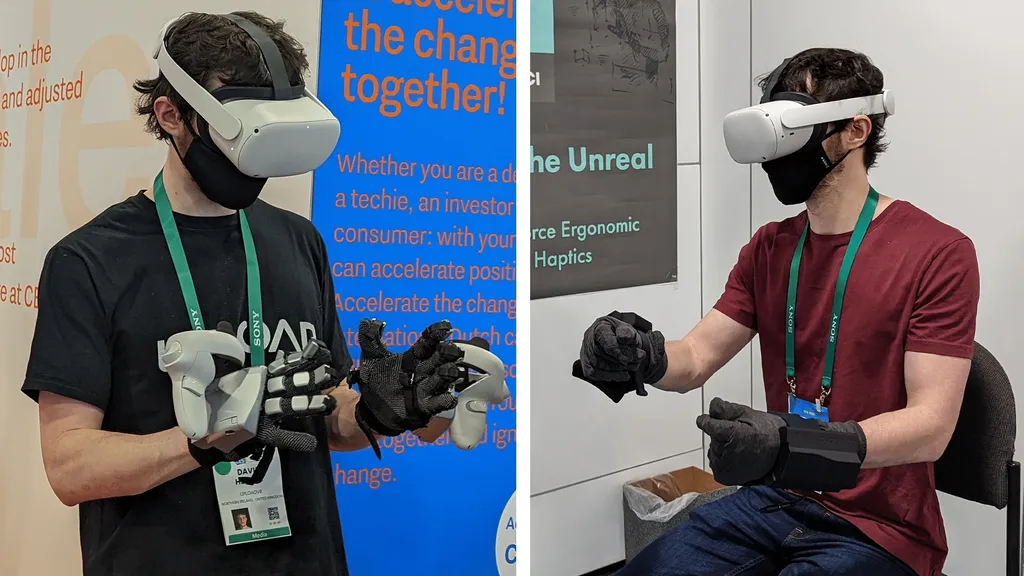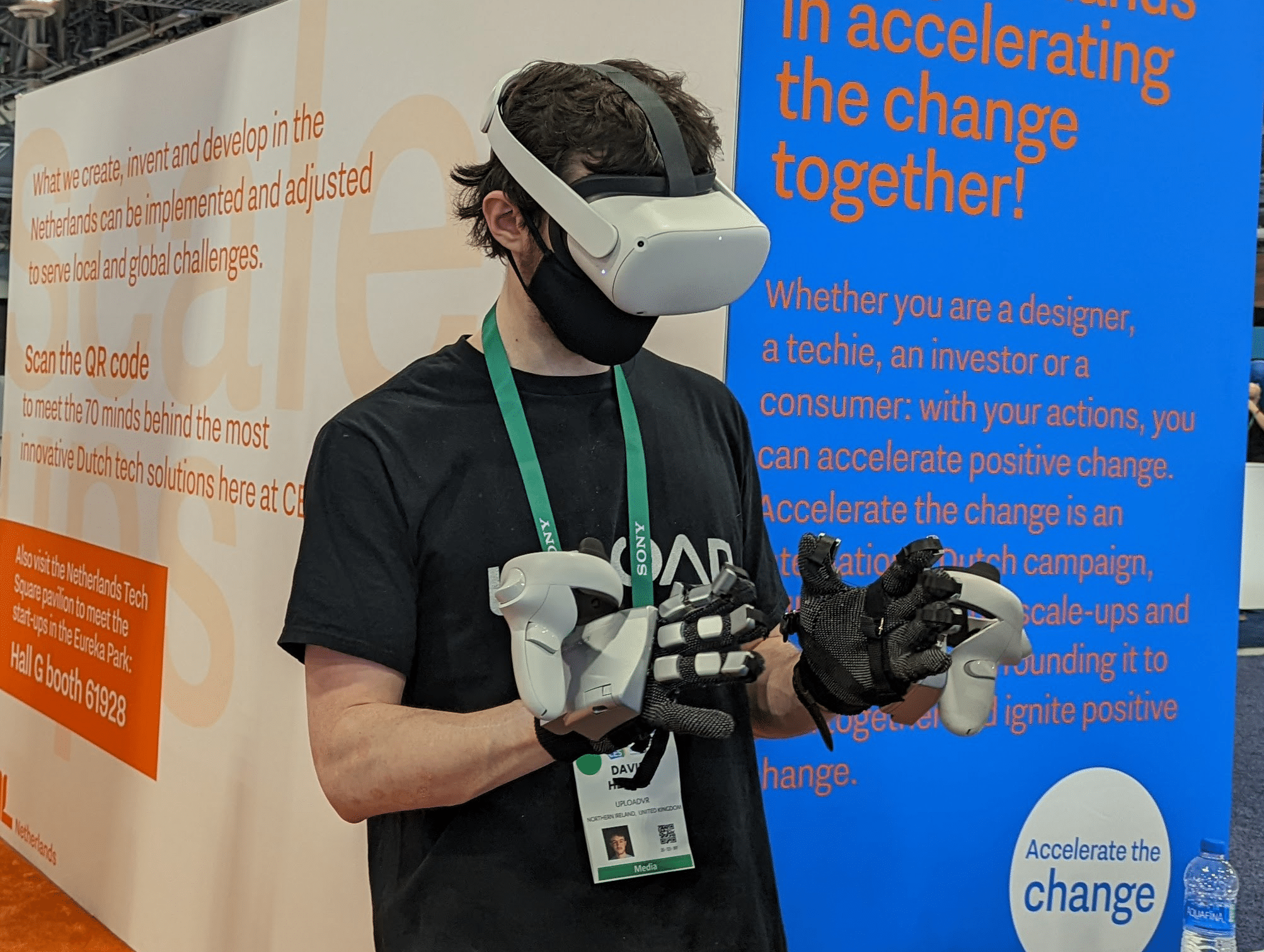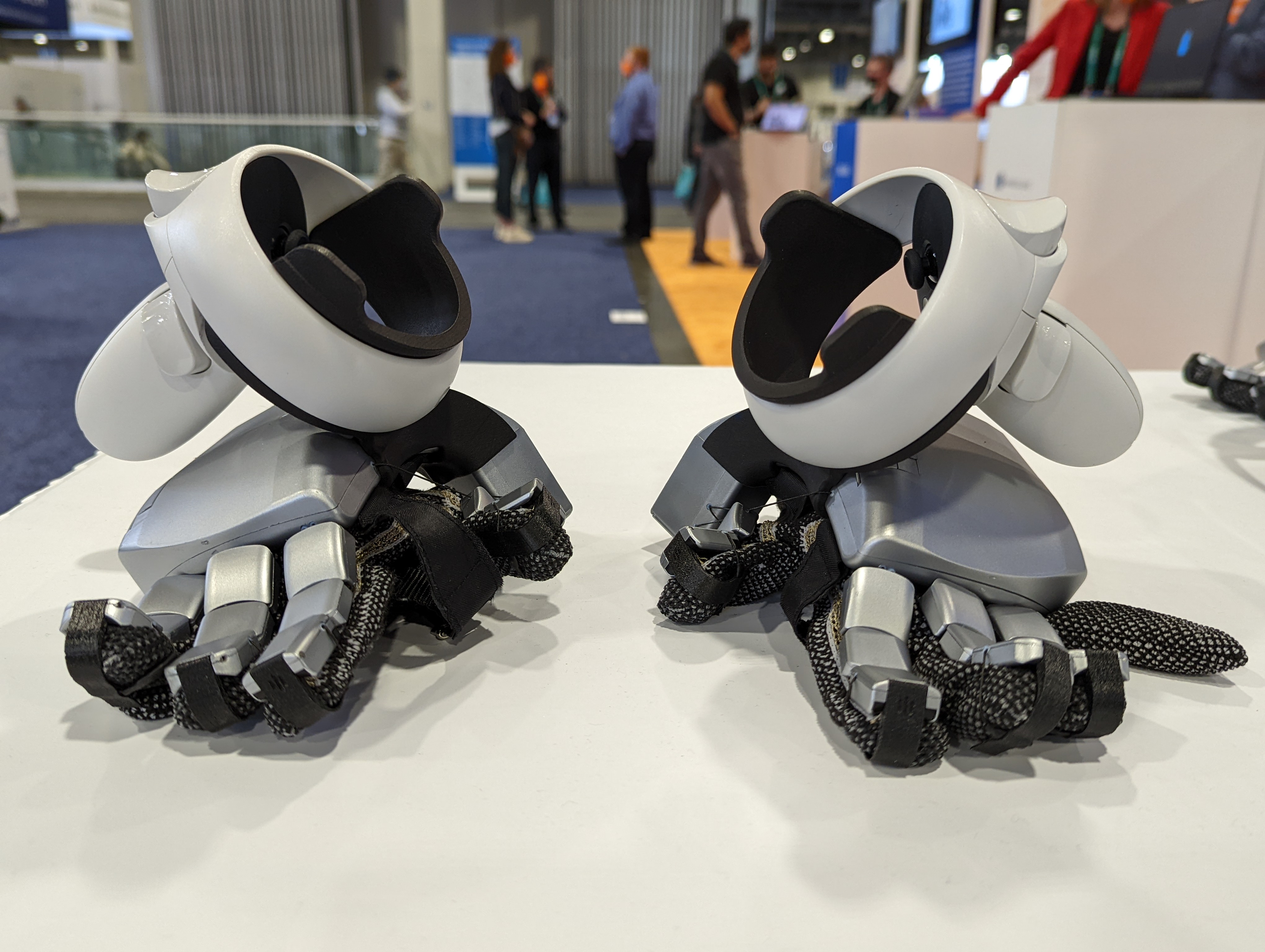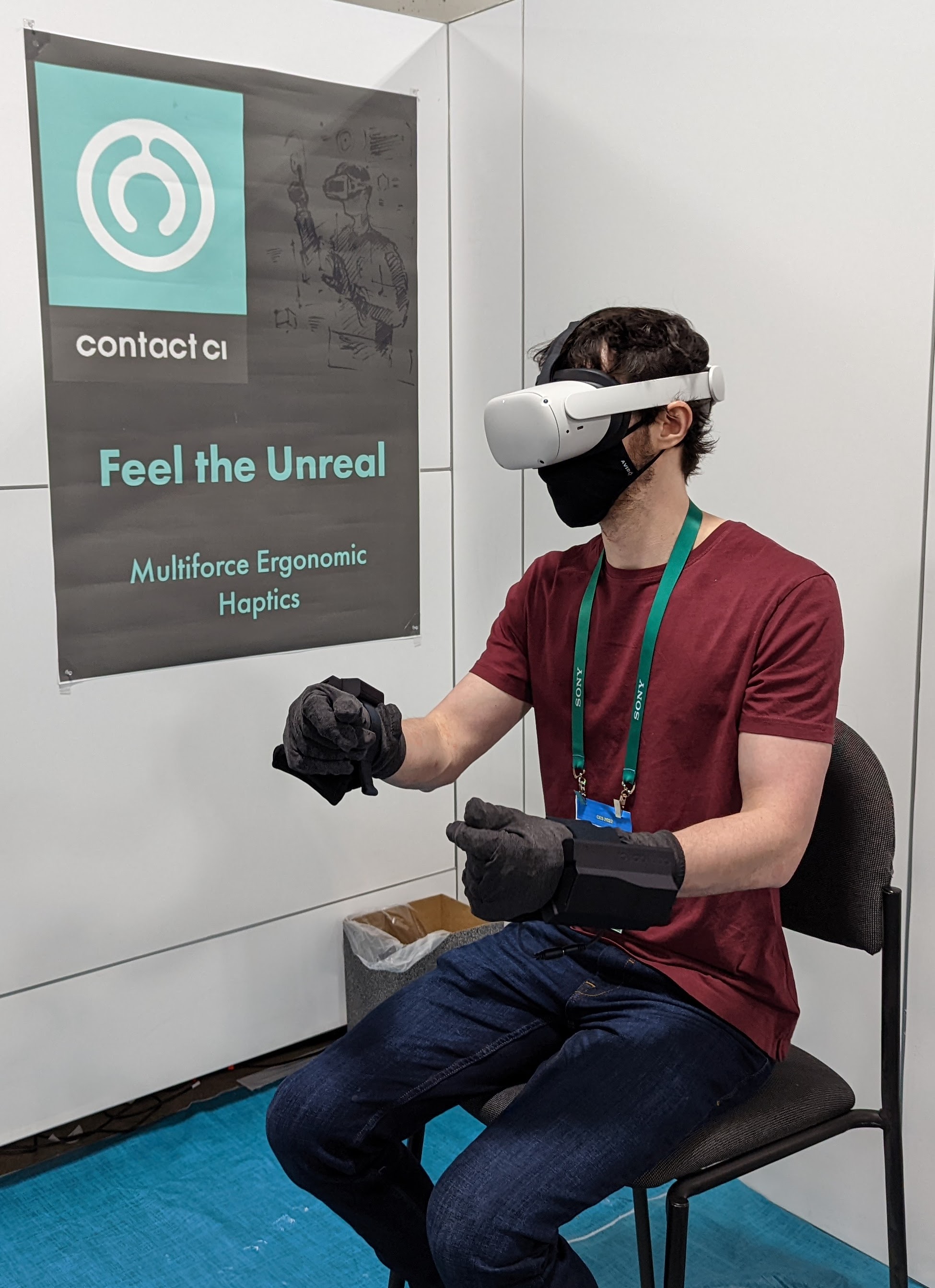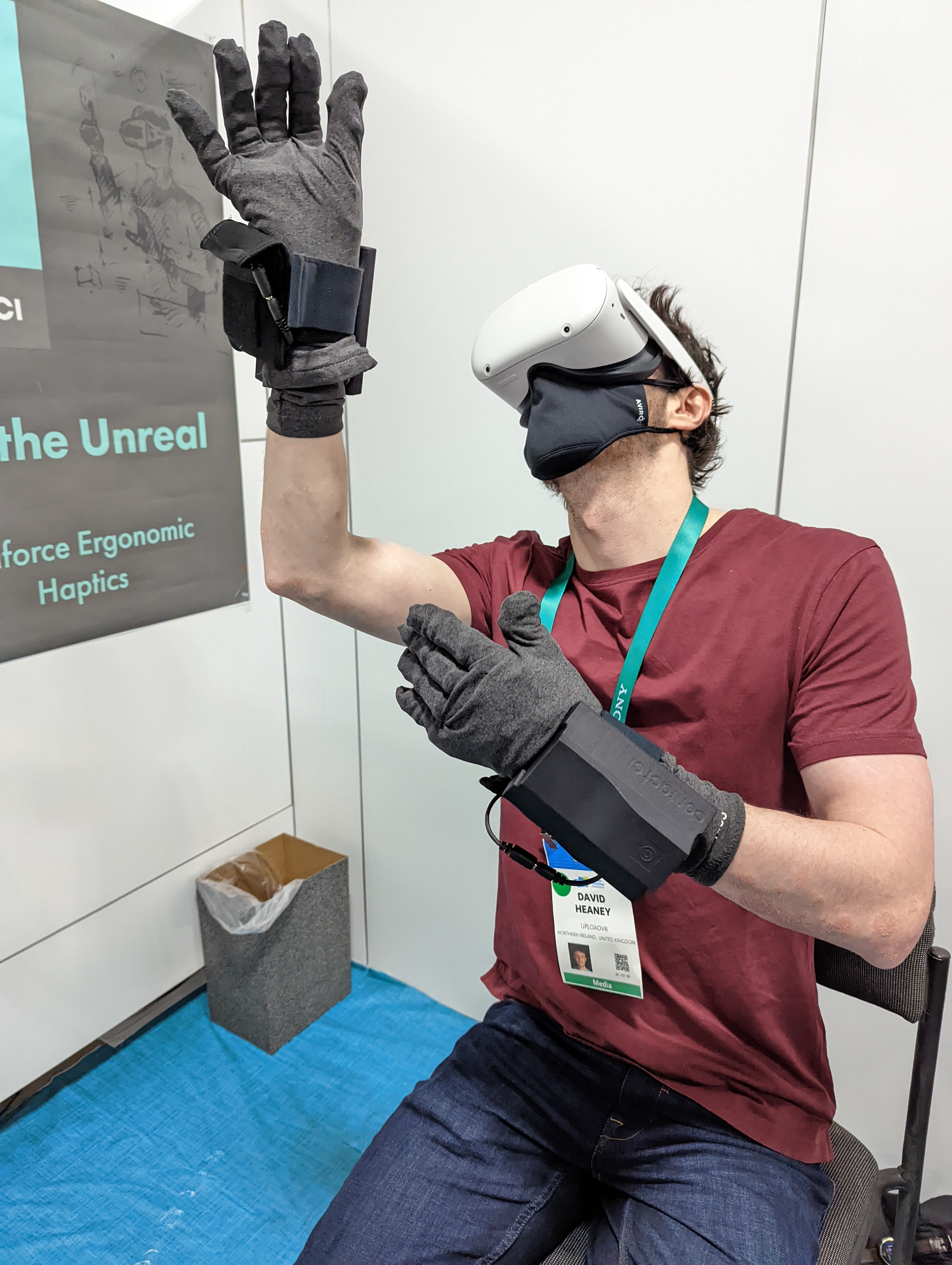At CES 2022 I tried on two force feedback gloves, SenseGlove’s Nova and Contact CI’s Maestro.
Many believe gloves could be the ultimate form of VR input, but most “VR gloves” simply feature vibration motors on each finger. Force feedback gloves, however, go further by actually restricting the movement of your fingers in response to a virtual object or surface.
High end force feedback gloves like HaptX DK2 cost tens of thousands of dollars and are tethered to a back worn or stationary power pack. HaptX also has more than a hundred tiny actuators on each hand to simulate the texture of virtual objects. But despite this fidelity, the cost is impractical for many organizations training at scale.
While the $5000 price of Nova and Maestro seems high in a consumer context, it’s well within the range of affordability for companies in sectors like automotive, engineering, healthcare, and defense. And crucially, both SenseGlove and Contact CI tell me their technology isn’t fundamentally expensive – future models produced in higher volume could reach a much lower price.
So how do Nova and Maestro compare? Is one superior to the other? Both gloves feature per-finger vibration motors that provide rudimentary simulation of texture. Where they differ however is in the level and fidelity of force feedback, such that each suits a slightly different use case.
Where SenseGlove’s Nova excels is in the sheer force of its feedback – it can provide up to 20 newtons of resistance. The demo I tried had me assembling a robot by pulling a lever to spawn new parts, then grabbing those parts and attaching them together. I could also pick up a can and crush it – a test of how quickly the system can transition from full resistance to zero. It really felt like grabbing a physical object.
Contact CI’s Maestro can only provide a few newtons of force, so isn’t as suitable for simulating grabbing large objects. But wearing it felt significantly less cumbersome than Nova – my fingers felt more free to move naturally. The force feedback actuator, although much less powerful, felt less artificial too. The demo here was in an aircraft cockpit. While grabbing the yoke didn’t quite feel right, flicking cockpit switches felt almost indistinguishable from reality. It was the best VR cockpit interaction experience I’ve ever tried.
For now, I’d take SenseGlove Nova for room-scale object interaction and Contact CI Maestro for seated cockpit experiences. Both companies are working on the next version of the hardware while working with real clients to understand what features to prioritize. If both products keep improving while maintaining the lower cost, HaptX will be facing serious competition in years to come.

